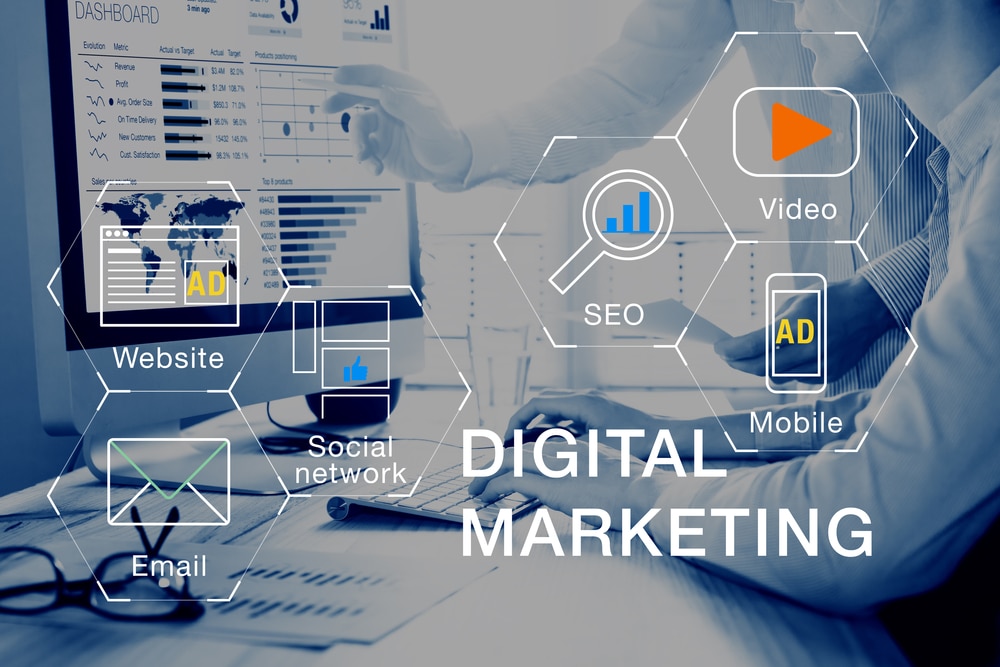As we head into 2025, the landscape of digital marketing continues to evolve at a rapid pace. Businesses and marketers must stay ahead of the curve by adapting to the latest trends and technologies. This comprehensive guide explores the top digital marketing trends for 2025, providing insights and strategies to help you stay competitive in the digital world.
1. Artificial Intelligence and Machine Learning
Artificial intelligence (AI) and machine learning (ML) are revolutionizing digital marketing by enabling more personalized and efficient strategies. Here’s how AI and ML will impact digital marketing in 2025:
a. Personalized Customer Experiences
- AI-Driven Personalization: AI algorithms analyze user data to deliver personalized content, product recommendations, and offers. This enhances customer experiences and increases engagement and conversion rates.
- Chatbots and Virtual Assistants: AI-powered chatbots and virtual assistants provide instant customer support, answer queries, and guide users through their purchasing journey.
b. Predictive Analytics
- Customer Insights: Machine learning models predict customer behavior and preferences, allowing marketers to create targeted campaigns and optimize their digital marketing efforts.
- Demand Forecasting: Predictive analytics help businesses forecast demand, manage inventory, and make data-driven decisions.
2. Voice Search Optimization
Voice search is becoming increasingly popular as more consumers use voice-activated devices like smart speakers and smartphones. Optimizing for voice search is essential for staying relevant in 2025:
a. Conversational Keywords
- Long-Tail Keywords: Voice search queries are typically longer and more conversational. Focus on long-tail keywords and natural language phrases to optimize your content for voice search.
- Question-Based Content: Create content that answers common questions related to your industry or products. Use headings and subheadings to structure your content for voice search.
b. Local SEO
- Near Me Searches: Voice search often involves local queries, such as “restaurants near me” or “best plumbers nearby.” Optimize your website and Google My Business listing for local SEO to capture voice search traffic.
- Featured Snippets: Aim to rank for featured snippets, as these are often read aloud by voice assistants. Provide concise, informative answers to common questions in your content.
3. Video Marketing Dominance
Video content continues to dominate digital marketing, with platforms like YouTube, TikTok, and Instagram driving engagement. In 2025, video marketing will be more important than ever:
a. Short-Form Videos
- Bite-Sized Content: Short-form videos, such as those on TikTok and Instagram Reels, capture attention and convey messages quickly. Create engaging, snackable content that resonates with your audience.
- User-Generated Content: Encourage your audience to create and share their own videos related to your brand. User-generated content builds trust and authenticity.
b. Live Streaming
- Real-Time Engagement: Live streaming allows brands to connect with their audience in real-time. Use live streams for product launches, Q&A sessions, behind-the-scenes content, and more.
- Interactive Features: Leverage interactive features like live polls, Q&A, and comments to engage viewers and create a sense of community.
4. Influencer Marketing Evolution
Influencer marketing continues to grow, but the landscape is evolving. In 2025, brands will focus on authentic and long-term partnerships with influencers:
a. Micro and Nano Influencers
- Niche Audiences: Micro and nano influencers have smaller but highly engaged audiences. Partnering with these influencers can drive more authentic and targeted engagement.
- Cost-Effective: Working with smaller influencers can be more cost-effective than partnering with mega influencers, making it accessible for businesses of all sizes.
b. Authenticity and Transparency
- Genuine Recommendations: Consumers value authenticity and transparency. Choose influencers who genuinely align with your brand values and can provide honest recommendations.
- Disclosure Compliance: Ensure that influencers comply with disclosure regulations, such as FTC guidelines, to maintain trust and transparency with your audience.
5. Augmented Reality (AR) and Virtual Reality (VR)
AR and VR technologies are transforming the way consumers interact with brands, offering immersive and interactive experiences:
a. AR in Shopping
- Virtual Try-Ons: AR allows consumers to try on products virtually, such as clothing, accessories, and makeup. This enhances the online shopping experience and reduces return rates.
- Interactive Ads: Use AR to create interactive ads that engage users and provide a unique experience. For example, AR ads can allow users to visualize furniture in their homes.
b. VR Experiences
- Virtual Showrooms: Create virtual showrooms where customers can explore products in a 3D environment. This is particularly useful for industries like real estate, automotive, and retail.
- Immersive Storytelling: Use VR to tell immersive brand stories that captivate your audience. VR experiences can transport users to different locations or provide a behind-the-scenes look at your brand.
6. Privacy and Data Security
With increasing concerns about data privacy, businesses must prioritize data security and transparency:
a. Compliance with Regulations
- GDPR and CCPA: Ensure compliance with data protection regulations such as GDPR (General Data Protection Regulation) and CCPA (California Consumer Privacy Act). Provide clear information about data collection and usage.
- User Consent: Obtain explicit consent from users before collecting their data. Implement robust data protection measures to safeguard user information.
b. Privacy-First Marketing
- Transparency: Be transparent about how you collect, use, and store data. Build trust by communicating your privacy policies clearly.
- First-Party Data: Focus on collecting first-party data directly from your customers through interactions on your website, social media, and email marketing. This reduces reliance on third-party data and enhances privacy.
7. Content Marketing and Storytelling
Content marketing remains a cornerstone of digital marketing, with storytelling playing a crucial role in engaging audiences:
a. Value-Driven Content
- Educational Content: Create content that educates and informs your audience. Offer valuable insights, tips, and solutions to their problems.
- Storytelling: Use storytelling techniques to create emotional connections with your audience. Share brand stories, customer testimonials, and case studies.
b. Diversified Content Formats
- Blogs and Articles: Regularly publish high-quality blog posts and articles to attract organic traffic and establish authority.
- Podcasts: Start a podcast to reach new audiences and provide valuable audio content.
- Ebooks and Whitepapers: Create in-depth resources like ebooks and whitepapers to offer valuable information and capture leads.
8. Social Commerce
Social commerce is the integration of social media and e-commerce, allowing users to shop directly within social platforms:
a. Shoppable Posts
- Seamless Shopping: Enable shoppable posts on platforms like Instagram, Facebook, and Pinterest. This allows users to browse and purchase products without leaving the app.
- Influencer Collaborations: Partner with influencers to create shoppable content that showcases your products and drives sales.
b. Live Shopping
- Live Sales: Host live shopping events where influencers or brand representatives showcase products in real-time. Viewers can make purchases directly from the live stream.
- Interactive Features: Use interactive features like live polls and Q&A to engage viewers and create a dynamic shopping experience.
Conclusion
As we move into 2025, staying ahead of digital marketing trends is crucial for businesses looking to thrive in a competitive landscape. By embracing AI and machine learning, optimizing for voice search, leveraging video marketing, evolving influencer strategies, exploring AR and VR, prioritizing privacy, creating compelling content, and capitalizing on social commerce, you can ensure your digital marketing efforts are effective and impactful. Keep an eye on these trends and adapt your strategies to stay ahead of the curve.

